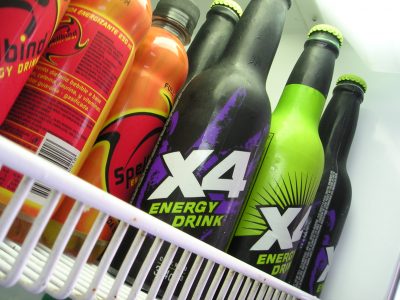“Energy drain” is a common complaint of athletes who train hard and often. Therefore, since they are reminded to hydrate adequately, they can be attracted to “energy beverages” that promise performance and energy boost in addition to fluid. Adequate rest, sleep, calories and water provide the essentials for energy. Where do energy beverages fit in? In short, energy drinks can be dangerous.
The main components of energy drinks are water, carbohydrates and caffeine. The danger in using these beverages for a “jolt” by enthusiasts who are juggling school, a job and social life in addition to training are numerous. Neglect of real meals, snacks and vitamin and caloric deficiency are just a few. Many of these products do not contain all the stated ingredients. Some of the ingredients may actually be damaging to performance and health over the long run.
Using a sports drink is a better idea. A period of 1 to 2 hours is necessary for the carbos  consumed in an energy drink to be available for energy. Because sports drinks contain lower concentration of sugars, sodium and potassium (which drive the desire to drink) are more useful in providing energy.
consumed in an energy drink to be available for energy. Because sports drinks contain lower concentration of sugars, sodium and potassium (which drive the desire to drink) are more useful in providing energy.
The energy that is felt immediately from energy drinks comes from caffeine, which has been shown to enhance performance for up to 2 hours. Unfortunately, the dose of caffeine is not always listed on the bottle and if too much is consumed you can feel light headed, experience diuretic and laxative affects. Since caffeine will dehydrate your body, energy drinks in large consumption with little to no other fluids make for a bad combination. Sometimes even a deadly one. Make sure your clients are drinking enough WATER above anything else!
In short, energy drinks are a wide mixture of ingredients that need further study and regulation. There is little standardization and a potential for serious drug interactions or fatal side effects. Inappropriate labeling can lead to failed drug tests and a large dose can impair an athlete’s performance. If the claims of a product sound too good to be true then they most likely are.

